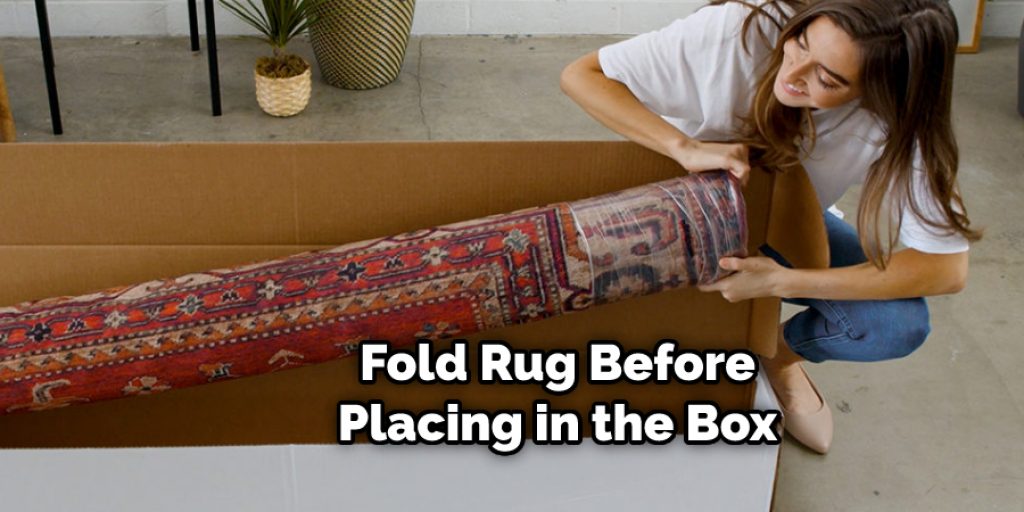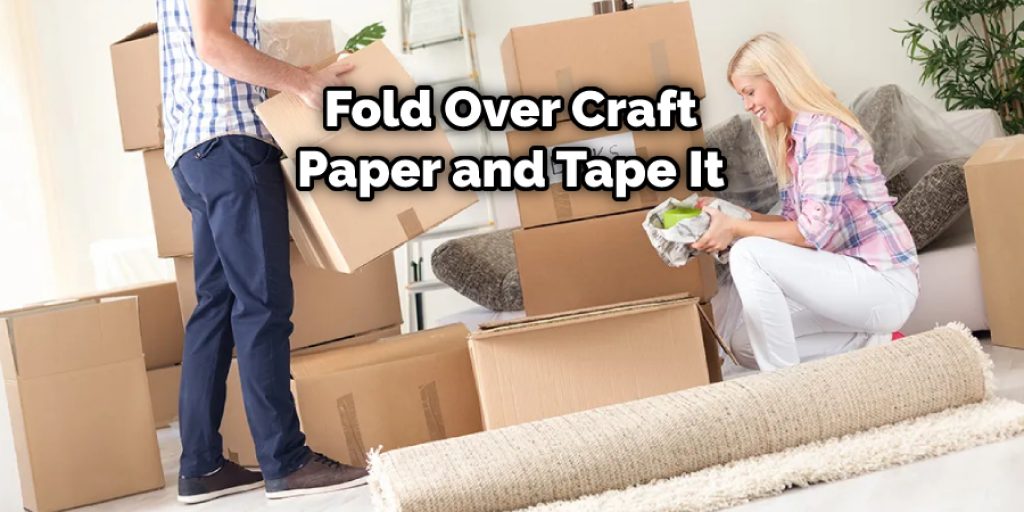How to Package a Rug for Return
Have you ever bought a rug and then had buyer’s remorse? You set the thing down in your home, looked at it for an hour or two, and realized that it just doesn’t work. It clashes with the room’s color scheme or is too big to fit in that one spot where you wanted to put it.

We’re going to talk about how to package a rug for return so it can be done quickly and painlessly when you return. When returning a rug to the store, there are some important considerations when packaging up your purchase in order not only to make sure they get returned but also stay in good condition until they reach their final destination. So let’s get started!
Things to Consider When Packaging Your Rug:
1. Using a Sturdy Box or Container:
If you are looking for the cheapest or easiest option, simply placing your rug in a plastic bag may be sufficient. However, if you want to ensure that your rug will not get dirty, torn, or damaged, then using a sturdy box will ensure that it arrives back with you in satisfactory condition.
2. Additional Padding:
Using towels or sheets of bubble wrap will prevent your rug from getting stained or torn. A simple way to do this is to place the bubble wrap on top of, and under the rug before placing it in its box. Just remember not to use too much tape when securing it so you can easily open up your package later!
3. Plastic Bags:
If you want to ensure that the rug is completely protected, especially if it does not fit snugly into a box, place it inside a plastic bag. If you use a plastic bag, make sure not to over-pack as this could damage your rug or cause unnecessary wear and tear.
4. Marking Your Box:
Be sure to mark your box as fragile. If you are shipping the rug via UPS, DHL, or FedEx, they might ask you to fill out a customs form before dropping off your package. Be sure to mark the form accordingly so that it will not get damaged in transit!
5. Protective Materials:
If you know that your new rug will not fit into a box or plastic bag, it may be best to purchase some additional materials such as foam sheets, bubble wrap, etc., designed specifically for protecting rugs. These materials can be found at most home improvement and craft stores.
6. Choosing the Right Size Box:
After you have chosen the right kind of box, it is essential to make sure it fits your rug perfectly. If your box is too large, there will be extra space that may lead to unnecessary movement or damage to your property. Using a smaller box might mean that you need to fold your rug before placing it in the box. However, if you are short on time or do not know how to fold your rug correctly, this might be a good option for you.

7. Packing Your Rug:
Once you have placed whatever materials are needed to protect your rug inside the box, it is now time to pack it securely so that it does not move or shift during transport. A good rule of thumb is the tighter, the better! Therefore, place heavy items towards the bottom of your box and lighter ones on top to lessen any pressure that may damage your rug.
What Things You’ll Need:
- Tape Measure or Ruler
- Bubble wrap or Packing Paper
- Box big enough to fit your rug
- Tissue paper or Newspaper
- Shipping tape
- Packing slip
Instructions: How to Package a Rug for Return
Step 1:
Figure out the size of the rug in square feet. The easiest way to measure this is by laying your rug on top of a large piece of white paper and tracing the outside edges with a pencil, ruler, or measuring tape. If you do not have any paper available, lay your rug on the floor and measure it by running a measuring tape or ruler straight across diagonally. Make a note of the two outside measurements.
Step 2:
Figure out how many square feet you’ll need to wrap up your rug to bring it back to the store (add one foot to this number). For example, if your rug is 10′ x 13′, you’ll need about 116 square feet of bubble wrap or packing paper. If you need to purchase bubble wrap or packing paper, the average roll is 14 feet wide, and you’ll need about 50 square feet. This will be enough for a small rug.
Step 3:
Measure out your plastic or brown craft paper so that it’s one foot wider than the width of your rug on all sides. For example, if your rug is 10′ x 13′, your plastic or brown craft paper should be 11′ x 14′. If you need to purchase this material, it usually comes in a roll of 400 square feet and will cost around $20-$30.
Step 4:
Place your rug in the center of the plastic or brown craft paper. Fold over one side of the plastic or brown craft paper and tape it to itself with a piece of packing tape, making sure not to leave any air pockets.
Step 5:
Fold the plastic or brown craft paper so that it’s half an inch in from one of the long sides. Tape down the side you just folded over with another piece of packing tape, making sure not to leave any air pockets.

Step 6:
Fold the plastic or brown craft paper in half, then tape it down to create a nice clean edge. Make sure that you don’t fold any of your rugs into this seam while wrapping. You’ll need at least six inches of overlap before taping down the side.
Step 7:
Tape down the remaining side of your plastic or brown craft paper to create a nice clean edge. Next, fold up all four sides of the plastic or brown craft paper to meet in the middle and tape together with packing tape to form a strong bottom.
Step 8:
Unfold the plastic or brown craft paper and place your rug inside. Pull one end of the plastic or brown craft paper up at a 45-degree angle so that it’s nice and tight, then tape down with packing tape. The bottom will roll up slightly as you do this. Do the same with the opposite side of your rug.
Conclusion:
If you’re looking to return a rug, we recommend following the steps mentioned in this blog post on how to package a rug for return. The rug must be packaged securely and carefully, so it doesn’t get damaged during transport back to us. There are a few different ways to pack up your rug, but the most important thing is that you care about how it’s folded or rolled.
The best tip we can offer for this process is to use plenty of packing material around the area where the rug has been cut from its frame, whether bubble wrap, foam, blankets, and then secure with tape. This will help keep any dirt and debris off of your newly cleaned carpeting and prevent any unraveling while you’re shipping. Be sure to follow all instructions on packaging an item when returning it!




